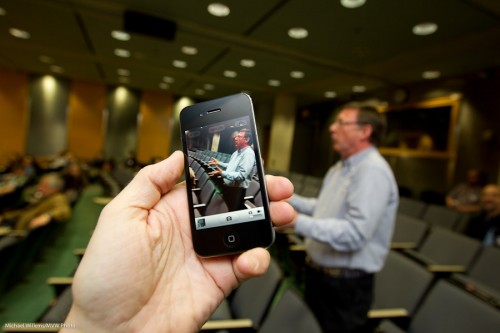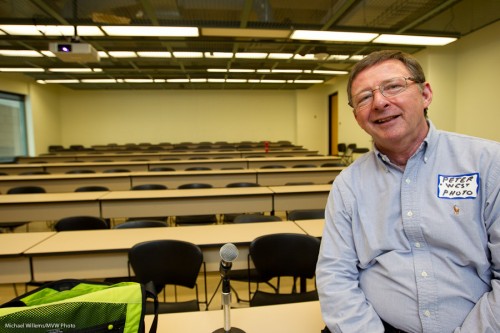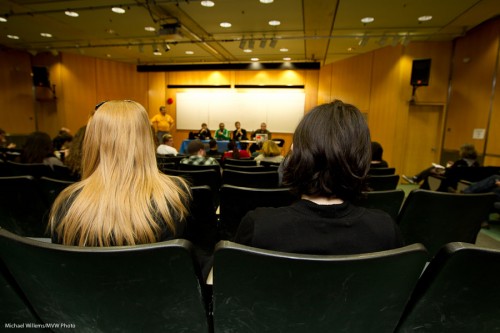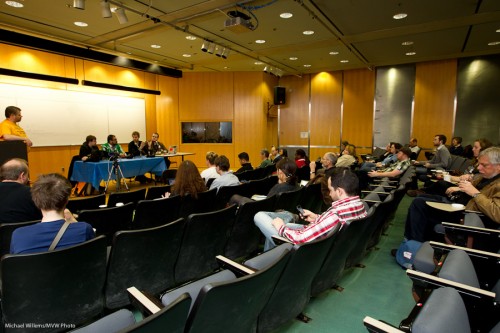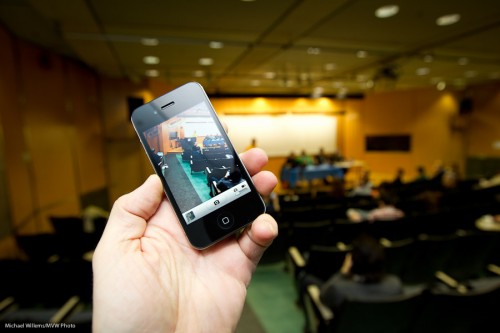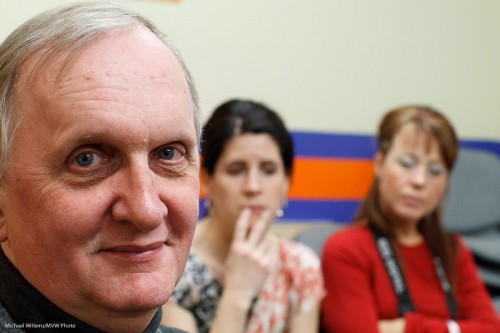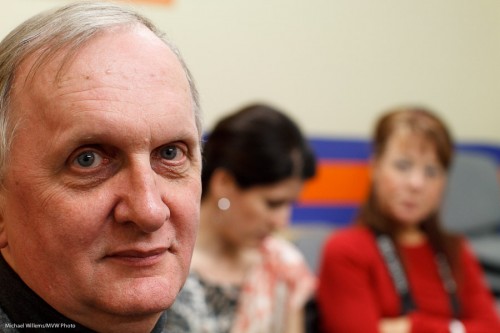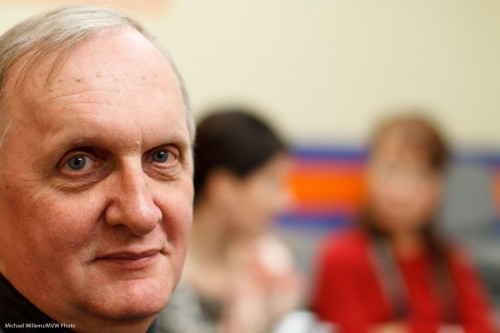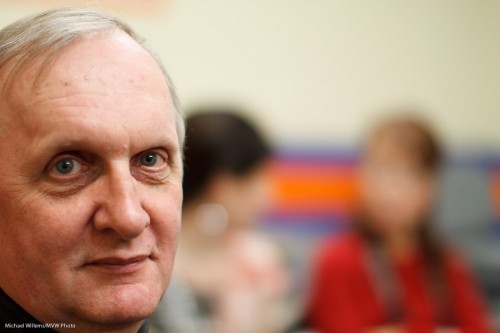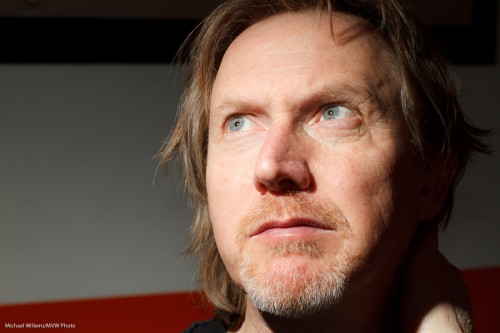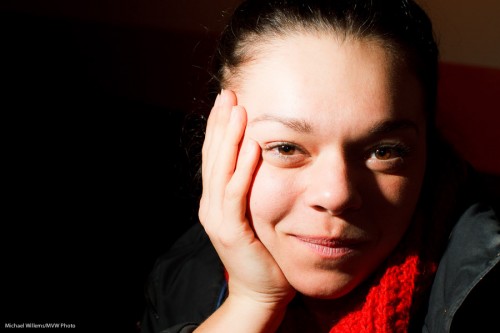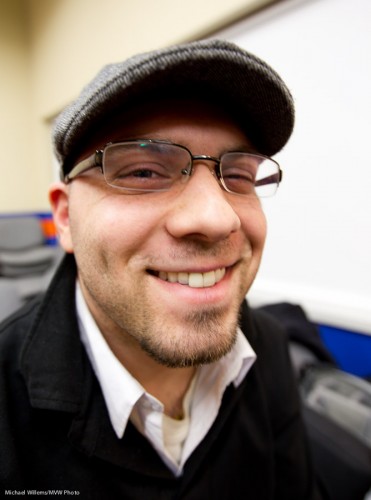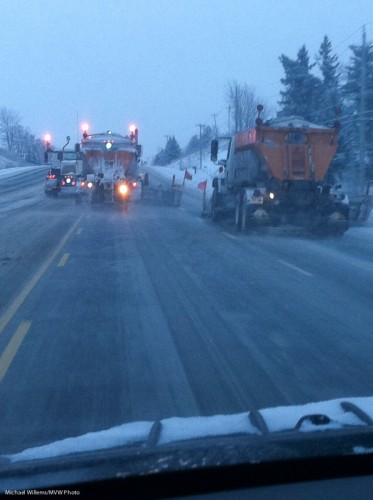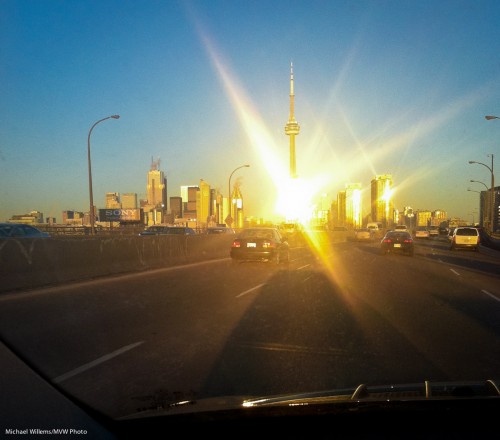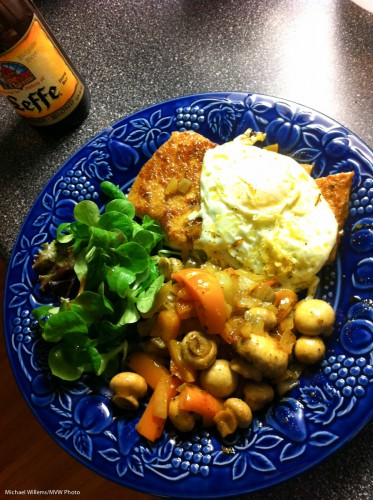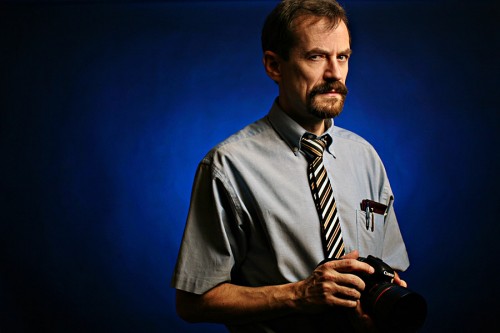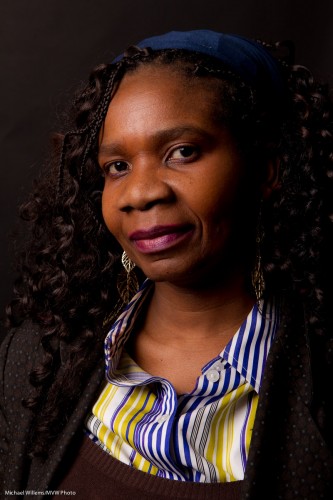Sunday I spoke at a large Social Media show in Toronto – one of the world’s biggest, at Ryerson University.
With my friend Peter West, pictured above in an image that stresses the importance of iPhotography, I talked to an audience about photography for social media. Small World: Ren Bostelaar and Mark Shannon, two of my Henry’s friends, were also on several of the forums, as well as in my audience.
The interest (and, um, yes, the room filled before we started) shows that social media are interesting to, and understood by, not just young people but also people as old as 25.
Okay, I kid. Peter and I are at least 30.
My talk was not just a 45-minute photography lesson. I had two additional main themes:
- You can do a lot on an iPhone. You can compose well, focus where you want, and even expose on a chosen point.
- Social media (like this blog post) are just better with photography.
When some people say photography is dead, I do not believe it at all. When others say “everyone can now do it”, I do agree – but only if they learn at least some of the same skills I, and every other professional photographer, had to learn.
For the images above, I used a fairly standard recipe:
- Camera on Manual mode
- Flash in TTL mode, aimed behind me, 45 degrees up
- 400 ISO
- 1/80th second at f/3.5
Those settings gave me an exposure reading just over a stop below zero on the meter – meaning the background is just over a stop below ambient, and the flash lights up the rest, namely mainly what’s in front of me.
And I think you may agree those pictures tell the story better than just words would.

